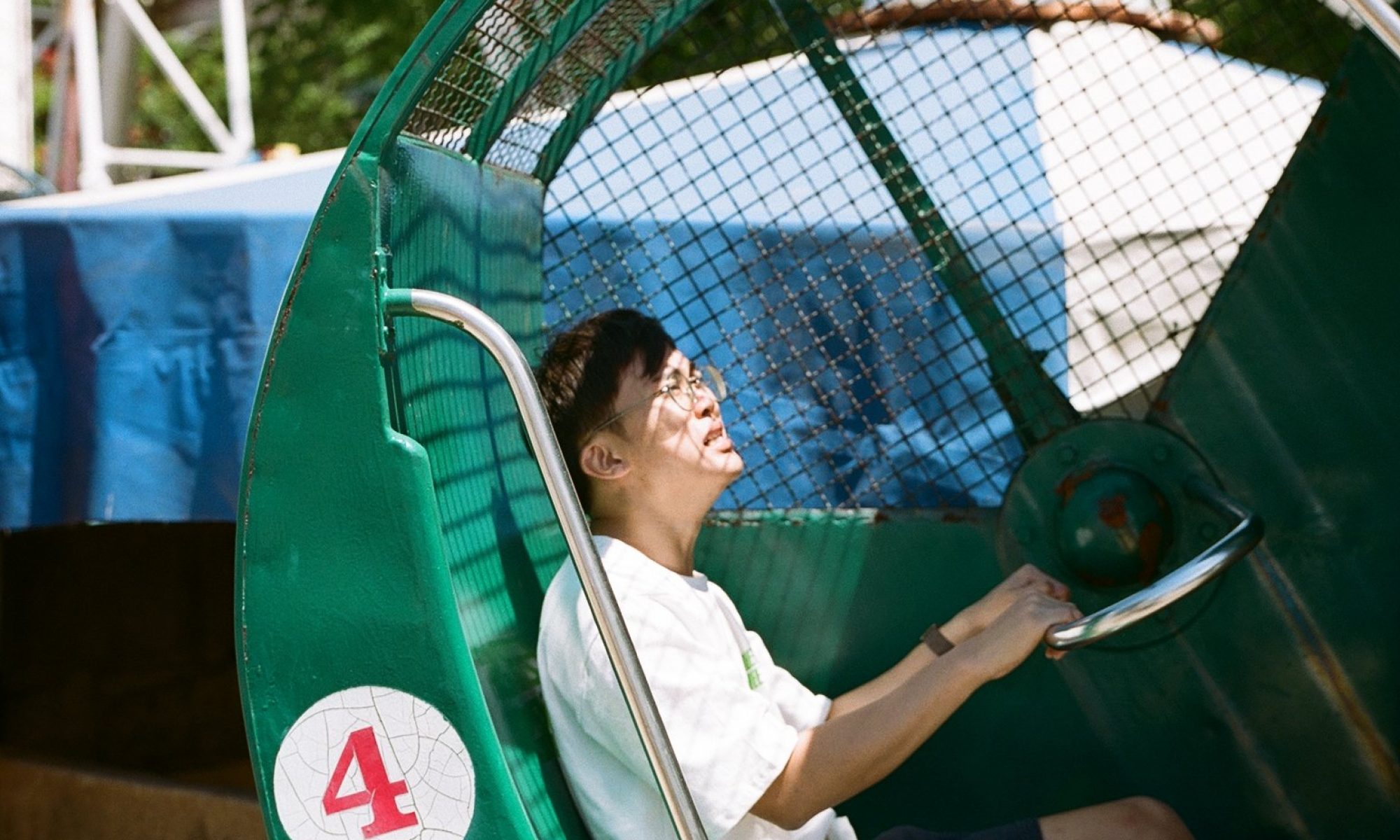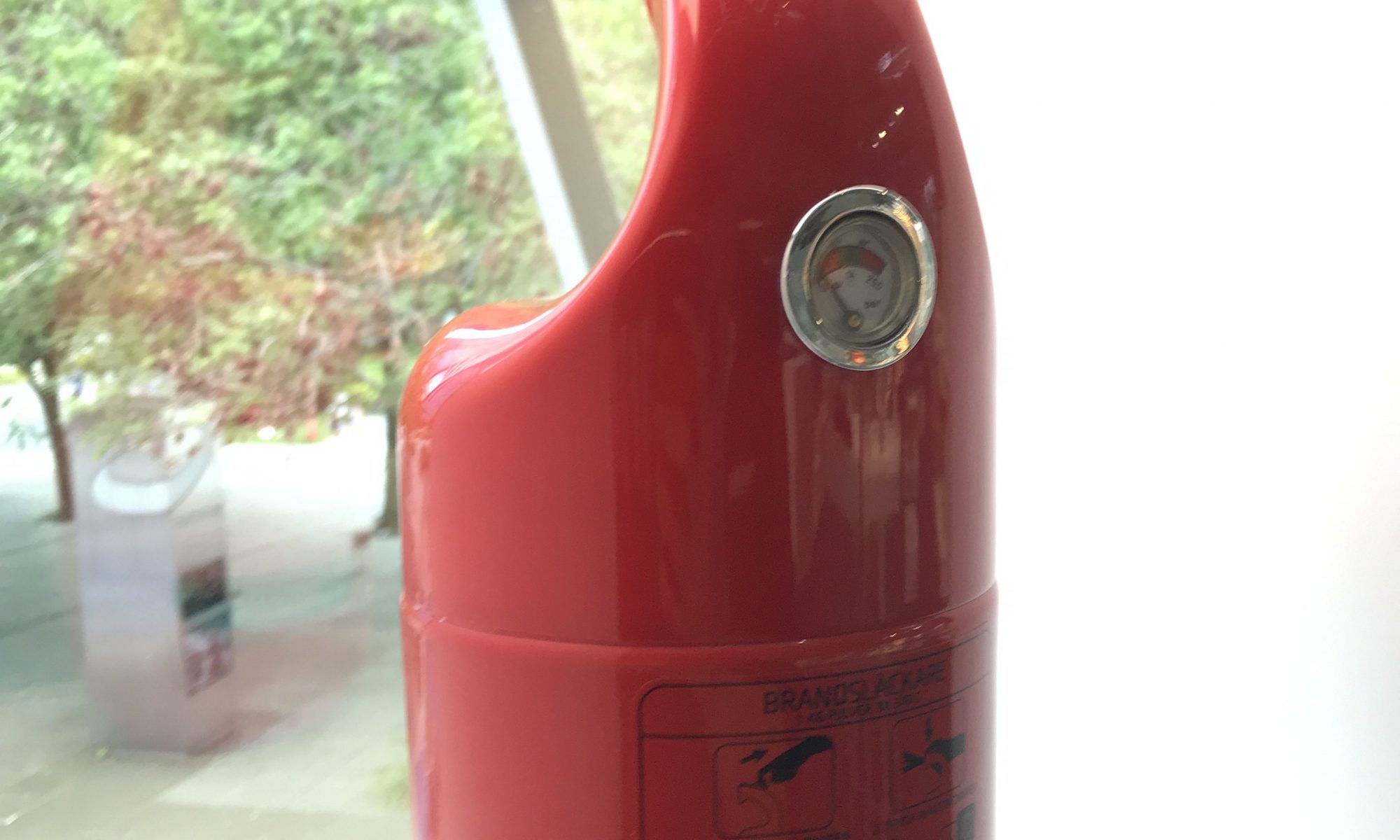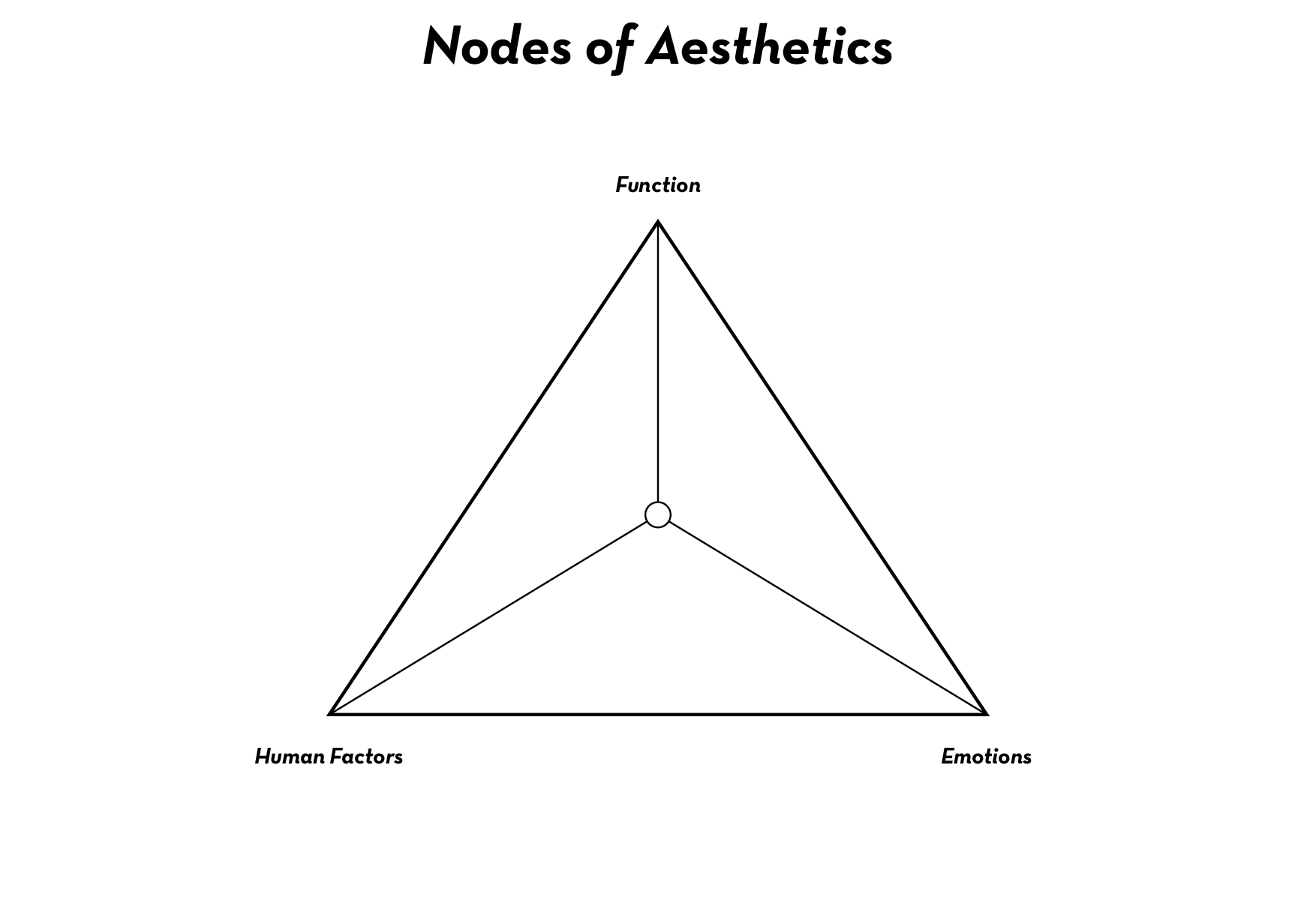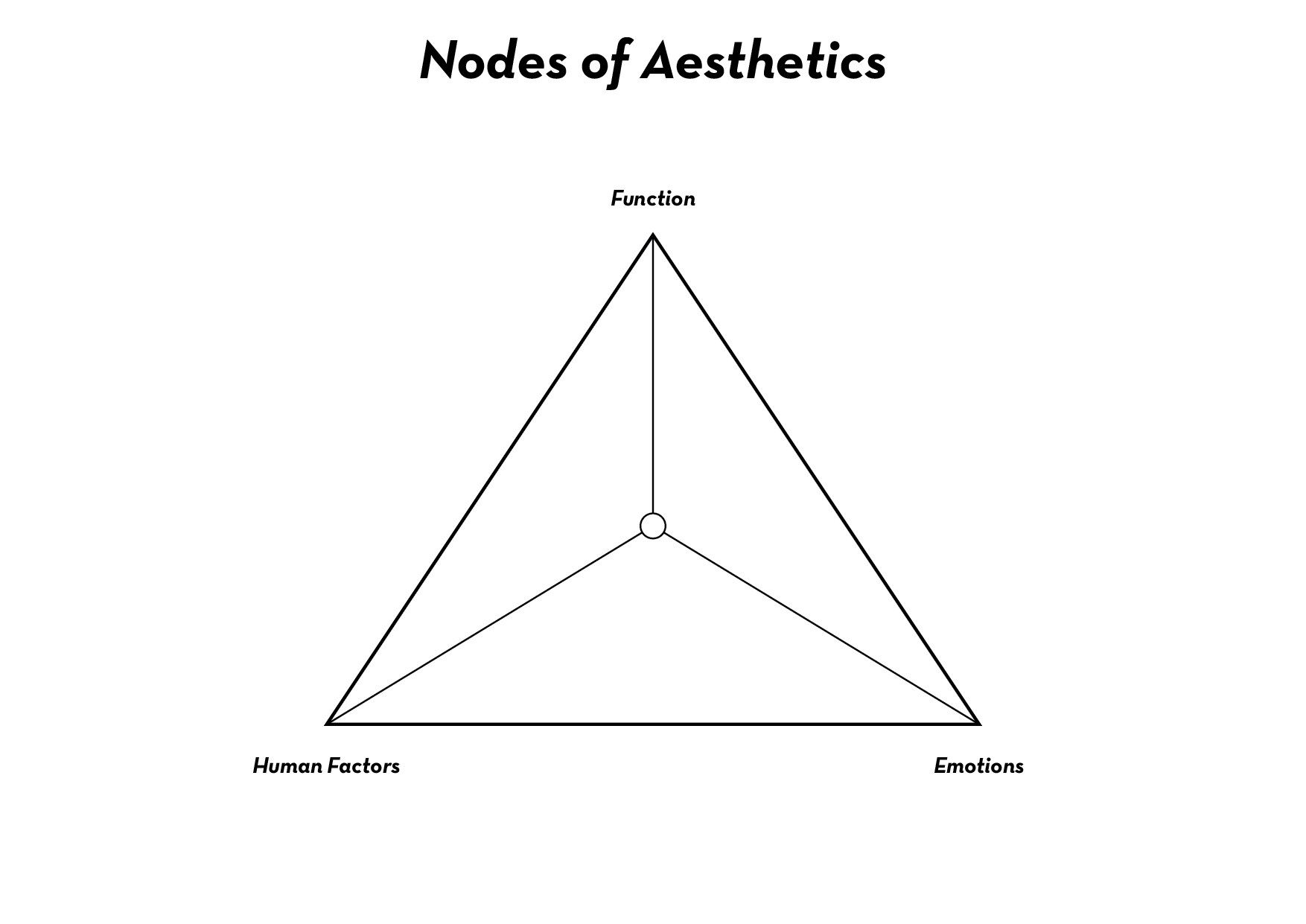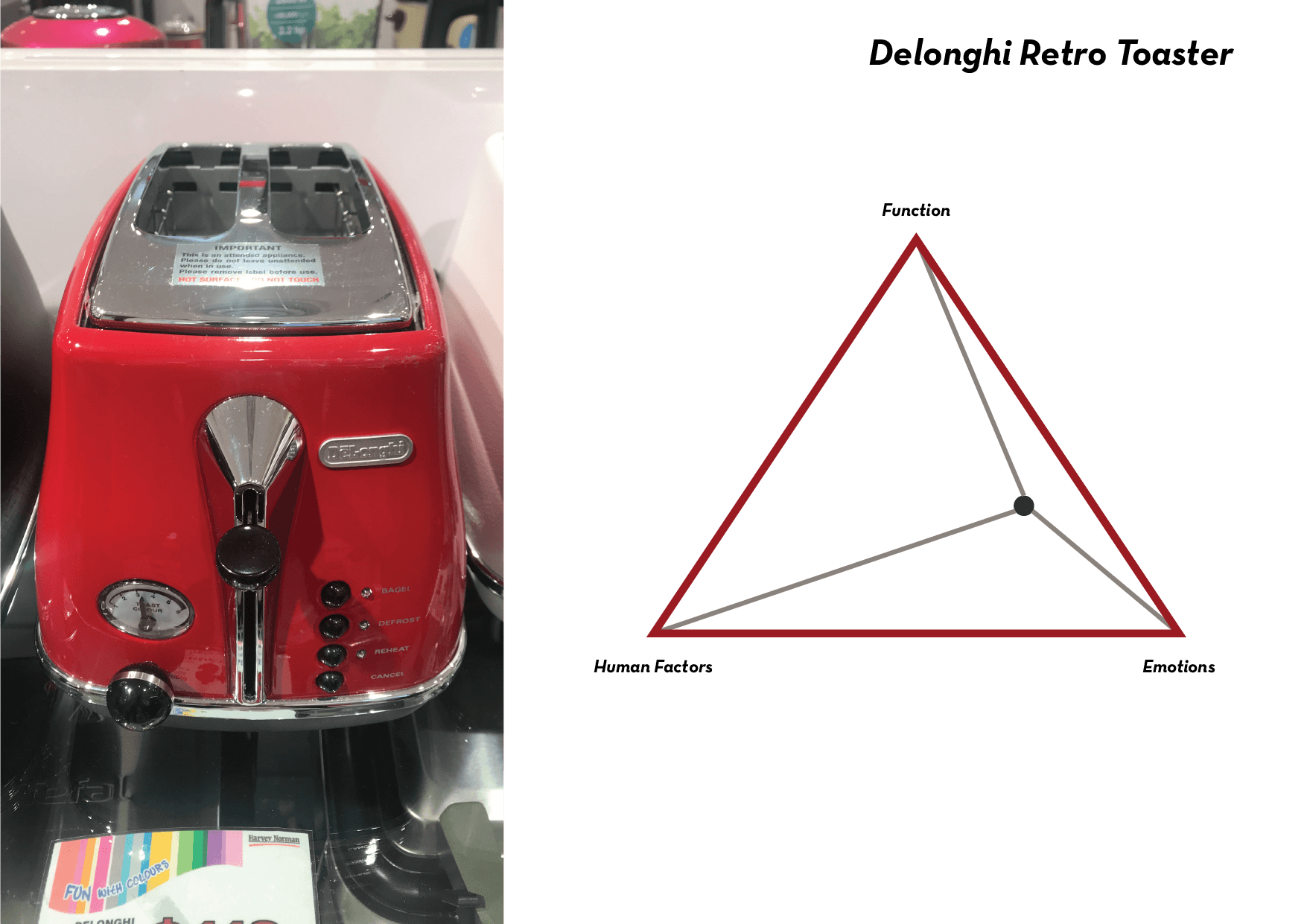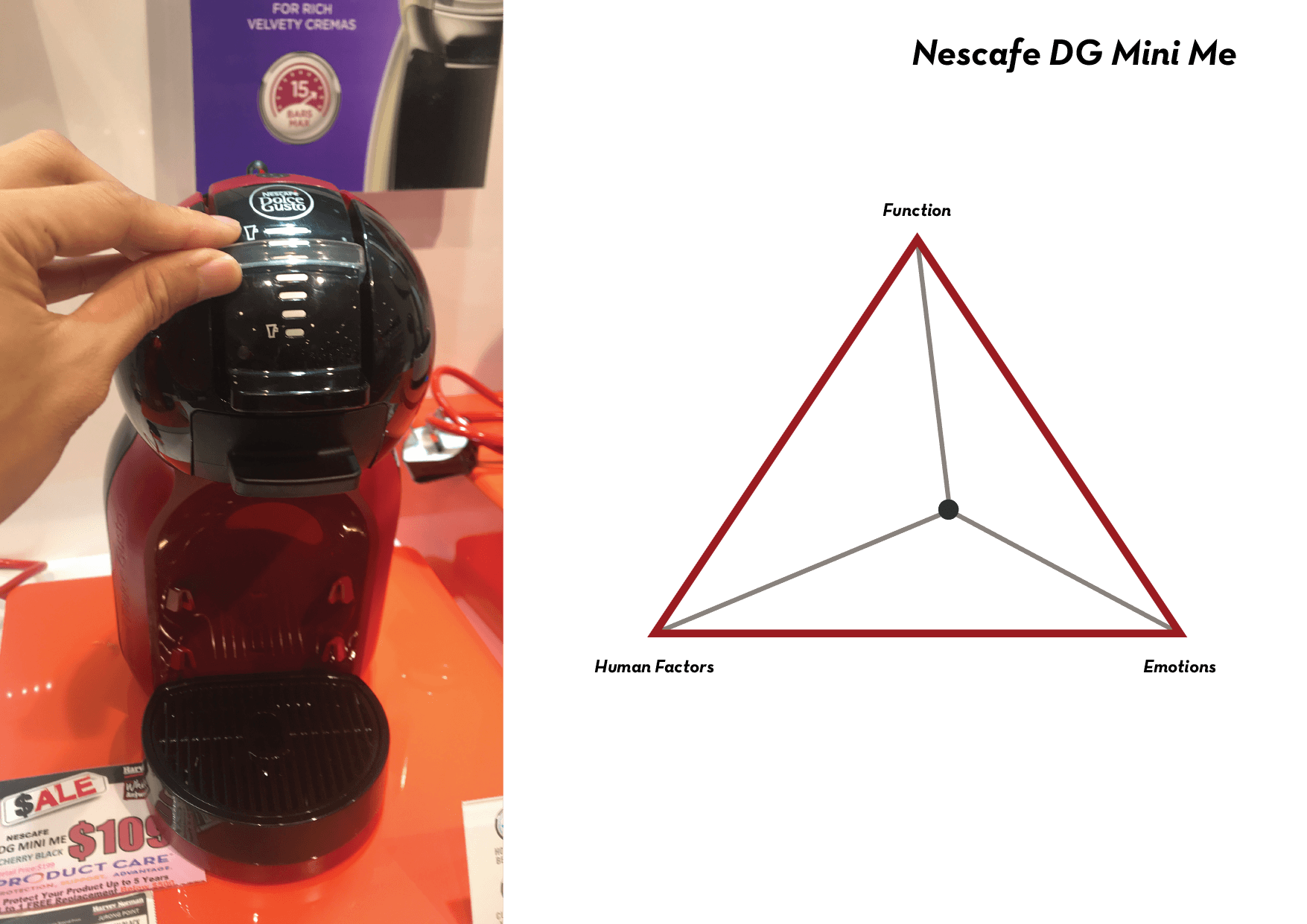The Red Dot Museum holds a collection of really beautiful and well designed products that was inspiring for me. It was strange to see products that we still use outside of the museum, which made me think about how well designed they are to be displayed here.
I will talk about some products that I feel strongly about. (Note I did not save a photo of the names of these items so I’m just going to call them what I think they are!)
#1 – Swiss Army Knife
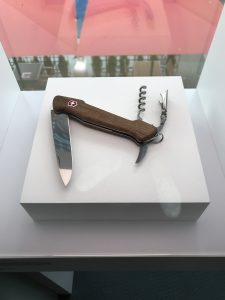
It was interesting to see this on exhibit as it is something that’s quite classic for many. That kind of already proved how good a design it is. Looking at it in the perspective of the triangle, I can see why:
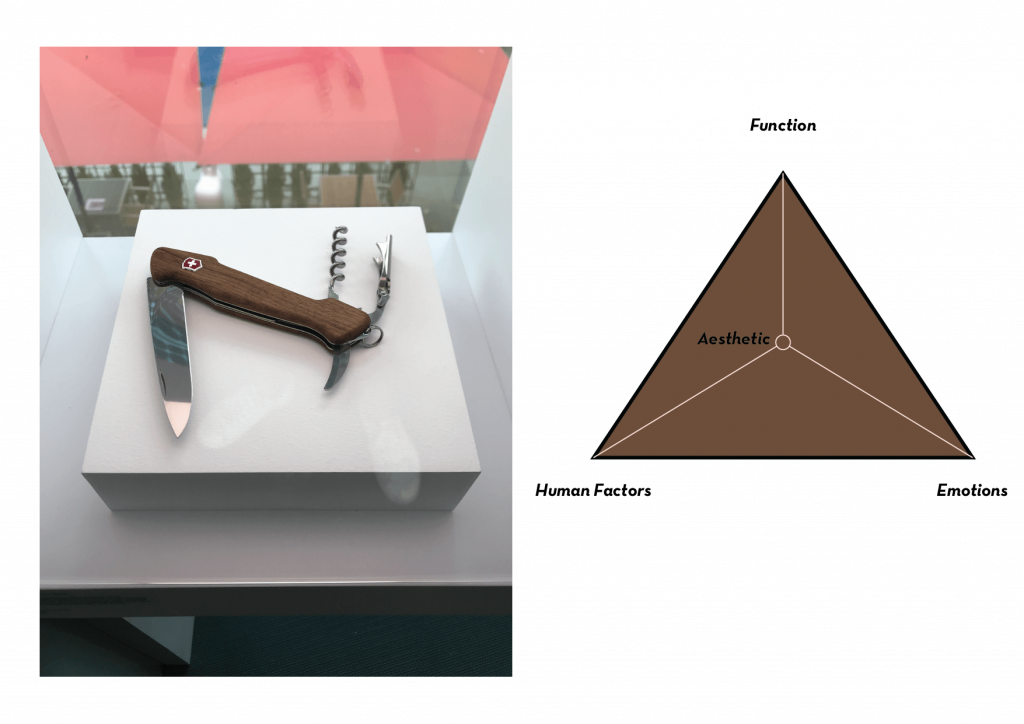
I put its aesthetics in the middle as it excelled in all three aspects. The knife is extremely functional due to its multi-function. Designed as a tool, it makes sense for people to use it to perform its function, and is as such supposed to perform its function well. The knife is very ergonomic as well, designed to fit in the hand of the user without problems, as well as creating a good grip through its hand-friendly grip shape. It is also easy to use and convenient — take it out of the pocket, pull out the tool you want, and if you finished using it, push it back in. Finally, the design speaks very well for itself, its wood finishing and quality invokes a sense of trust in the product. We know it is reliable and well made. It is a reflective design, as it does not only excel in its appearance and its usability, it also is sleek enough to allow one to make a statement with it. Using it allows one to think about how it will portray the user’s identity when using the product, how reliable and ready he/she is.
#2 – Pizza Cutter
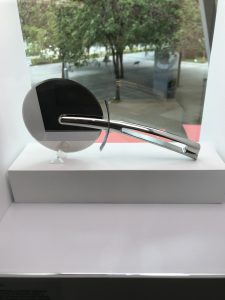
This pizza cutter was one of the first few items on the window side exhibit that caught my attention. This is how I rate it:
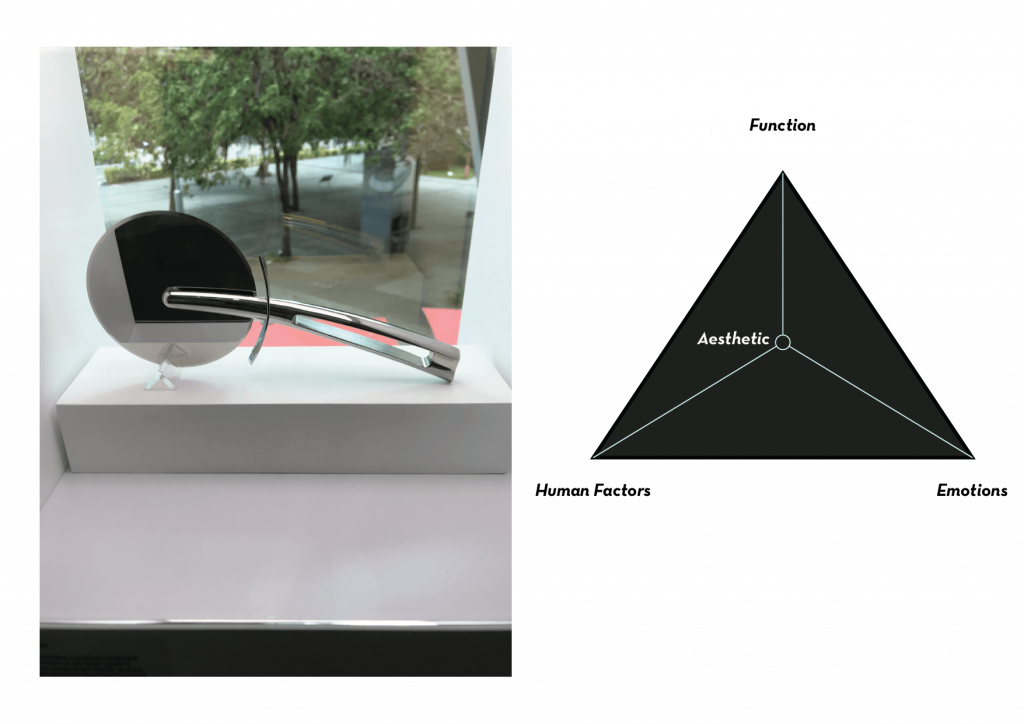
Once again, another perfectly balanced product in terms of aesthetics. In terms of function, it is what it is, a simple pizza cutter. In terms of human factor, the appearance do feel comfortable to hold, with that gradual curve that allows our finger to grip it comfortably. In terms of its composition, it was made to look weighted towards the cutter side, which allow users to know which way to grip it to allow the cutter to be most effective (which is downwards, in the way it is displayed). Lastly, the product can evoke some kind of emotions, as it is designed to not just be sleek, but also reflective. These qualities made it look very clean and swift, almost as it the pizza cutter is some kind of samurai sword. This makes it very classy but at the same time aggressive. That in itself can give users a good feeling using the product. The design is also a reflective design (literally, too), surpassing visceral and behavioural design, as it is of a certain taste that would start conversations on the dining table.
#3 – Elephant Fire Extinguisher
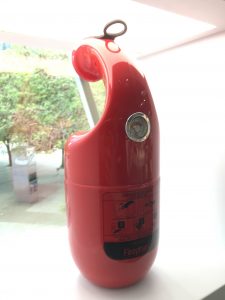
This product was an interesting take at the fire extinguisher, redesigning its grip and hose to resemble an elephant trunk.
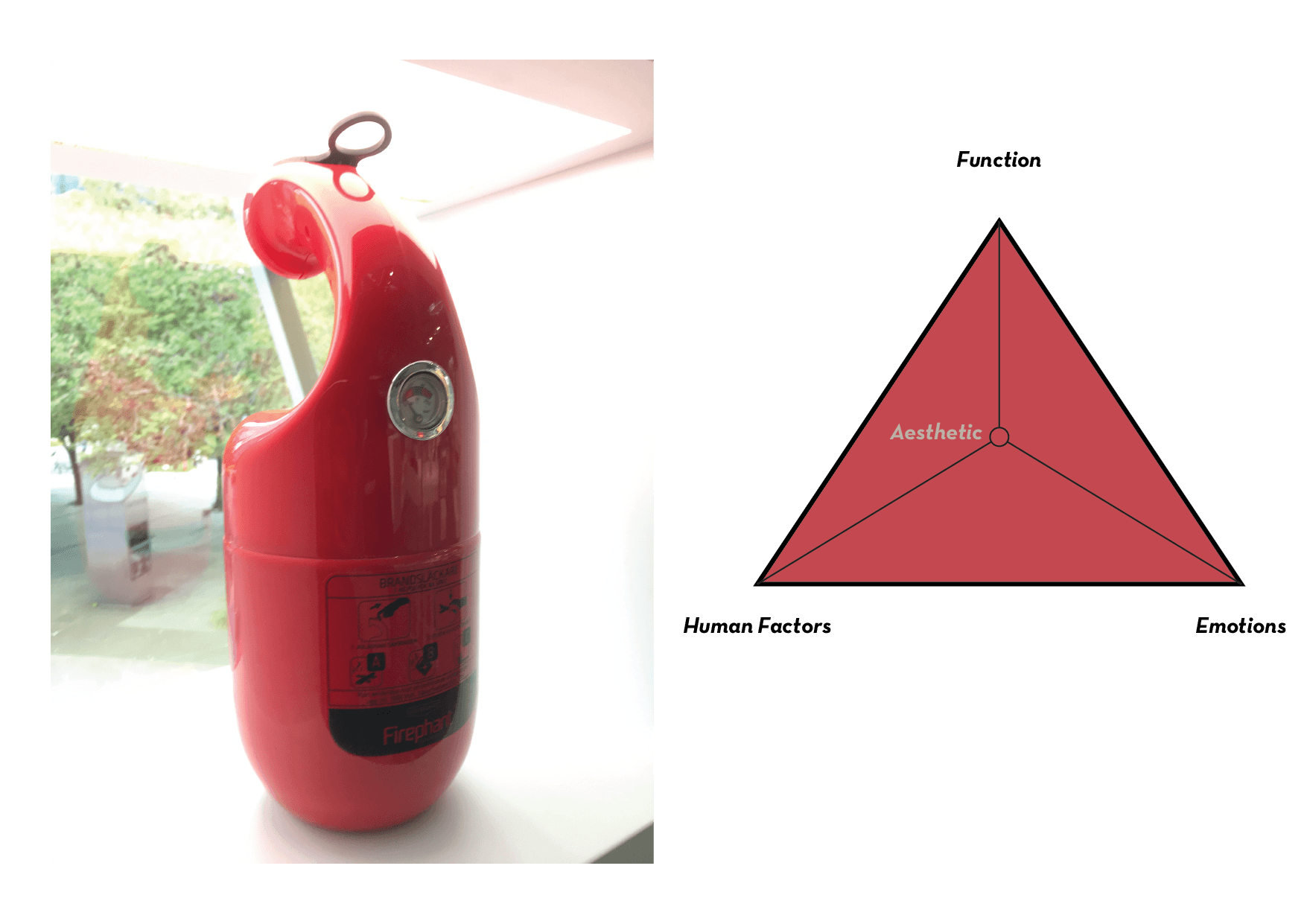
In terms of functionality, it works very well as it has the gauge and instructions at the right place, the overall pin and the nose is at a location that is easy to see and operate, which makes it easy to operate and perform its function. In terms of human factor, it is very friendly especially to people who don’t know how to use a fire extinguisher. Too many times I looked at a fire extinguisher and wonder how to operate it in an emergency as it looks too complex to use with all the tabs, knobs, and levers. The design is rounded, which makes it comfortable to hold especially at the part where the hand is supposed to grip the extinguisher. It is clearly designed to be held in a certain way that makes it comfortable and effective. Like I said earlier, it is designed to be intuitive to use, and as such excelled in human factor. In terms of emotions, this one appears to be very cute and friendly. This personality therefore allows one to feel comfortable to pick it up and use it, no matter who they are or whether they know how to use a fire extinguisher or not. The design is, unfortunately, not a reflective, but more behavioural due to the fact that we do not use fire extinguishers in our daily lives. It is designed to be more intuitive and easy to use in the event of an emergency, rather than something that one will keep for others to consider how it looked on them.
Conclusion
This trip allowed me to see and compare what design is aesthetically pleasing within its own product archetype. I was deeply inspired by many designs, and I hope to be able to have something I designed to be displayed at the museum in future.
